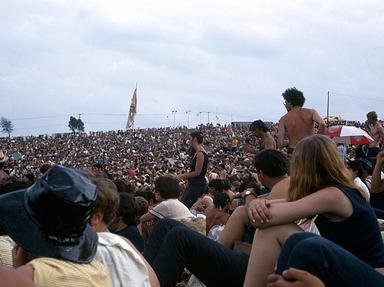Quiz Answer Key and Fun Facts
1. The 1969 Woodstock Festival came with its own sub-title; "A(n) ____ Exposition: Three Days of Peace and Music". What goes in the blank?
2. The song "Woodstock", which captures the spiritual journey of a young man heading to Max Yasgur's farm, was written by which woman who, ironically, did not attend the Woodstock Festival of 1969?
3. Which band, who would launch their third album "Green River" only a week before the Woodstock Festival in 1969, were the first major act to sign up for the concert yet finished up with the ignominy of having to perform in the 3:00 am timeslot on the Sunday morning?
4. Max Yasgur's farm, with its natural bowl shape sloping down to Filippini Pond, was identified early in the planning stage as the preferred venue for the Woodstock Festival of 1969.
5. With the words of her hit "We Shall Overcome" ringing out to a rapt audience, which "Queen of Folk" took to the stage at the 1969 Woodstock Festival almost six months pregnant?
6. Unlike the infamous Altamont Free Concert that would take place four months later in California, the 1969 Woodstock Festival was fatality free.
7. Jimi Hendrix and his new band closed the 1969 Woodstock Festival. What was the name of the band that Hendrix appeared on stage with?
8. One of the most memorable moments of the 1969 Woodstock Festival was an impromptu performance by which man, the then lead singer for the band Lovin' Spoonful?
9. Here's a quick one - who was interrupted on stage during their set at the 1969 Woodstock Festival by social activist Abbie Hoffman?
10. The title of this quiz, "Candles in the Rain", is also the sub-title of a Melanie Safka song that was inspired by the events that she'd witnessed at the Woodstock Festival in 1969. What is the title of that song?
Source: Author
pollucci19
This quiz was reviewed by FunTrivia editor
agony before going online.
Any errors found in FunTrivia content are routinely corrected through our feedback system.
